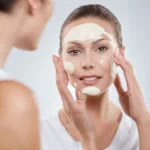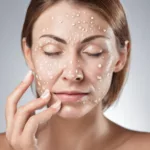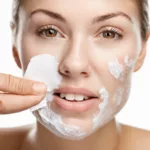22 November 2023
Exploring the various reasons for skin peeling and how to effectively care for and treat this common condition
Skin peeling, also known as desquamation, is a natural process that occurs as the skin heals from damage or undergoes renewal. While it can be a normal occurrence, skin peeling can also be a symptom of underlying medical conditions or reactions to irritants. In this article, we will delve into the causes of skin peeling, discuss effective skin care strategies, and explore medical treatments for severe cases.
Peeling Skin Causes: Burns, Conditions, and Infections
– Sunburn: The damaging effects of ultraviolet radiation from the sun can lead to sunburn, causing the skin to peel as it heals.
– Peeling Skin Syndrome (PSS): A group of rare inherited skin disorders characterized by excessive and continual skin peeling.
– Hand Eczema: A skin condition that causes dry, cracked, and peeling skin on the hands, often triggered by irritants or allergens.
– Other Health Conditions: Various conditions such as Keratolysis exfoliativa, Oudtshoorn disease, Ichthyoses, and Kawasaki’s disease can also cause skin peeling.
– Infections: Certain infections like jock itch and scarlet fever can result in peeling skin.
Skin Care With Skin Peeling
– Sunburn: Proper skin care after a sunburn involves moisturizing, avoiding petroleum-based products, staying hydrated, and protecting the skin from further sun exposure.
– Peeling Skin Syndrome: Applying emollient ointments and avoiding friction, heat, and moisture can help manage symptoms.
– Hand Eczema: Identifying and avoiding triggers, using gentle cleansers, moisturizing regularly, and protecting the hands can alleviate symptoms.
– Keratolysis Exfoliativa: Protecting the skin from irritants and using hand creams can help manage this condition.
– Jock Itch: Treating the fungal infection with antifungal products, practicing good hygiene, and changing clothing daily can alleviate symptoms.
Chemical Peel
– A chemical peel is a cosmetic procedure that uses acidic solutions to improve the appearance of the skin.
– Superficial, medium, and deep peels are available, each targeting different skin concerns and requiring varying healing times.
– Chemical peels work by loosening dead skin cells and stimulating the growth of new skin.
Laser Resurfacing
– Laser skin resurfacing is a cosmetic procedure that uses concentrated beams of light to address skin issues.
– The procedure removes the outer layer of skin and stimulates collagen production for smoother and firmer skin.
– After the treatment, the skin may experience redness, swelling, and peeling, which gradually improves over time.
Severe Skin Peeling: What’s Dangerous?
– Toxic epidermal necrolysis (TEN) is a severe, life-threatening skin disorder characterized by extensive peeling and blistering.
– TEN can be caused by a drug reaction and requires immediate medical attention and hospitalization.
Conclusion:
Skin peeling can occur for various reasons, ranging from mild and temporary to severe and life-threatening. Understanding the causes and appropriate care for skin peeling is crucial in managing symptoms and preventing complications. Whether it’s sunburn, underlying medical conditions, or infections, proper skincare and medical treatments can help alleviate discomfort and promote healing.



